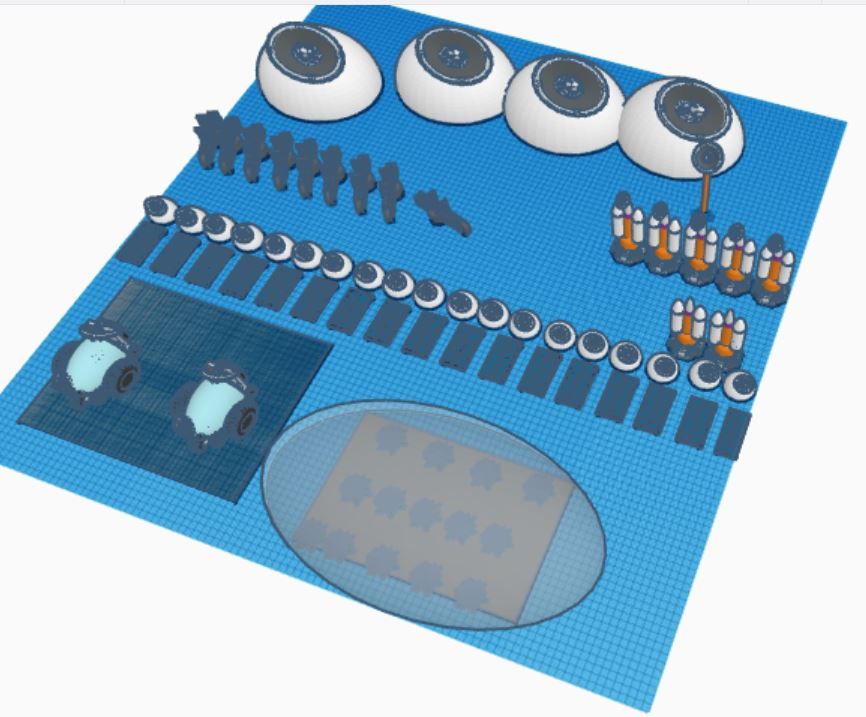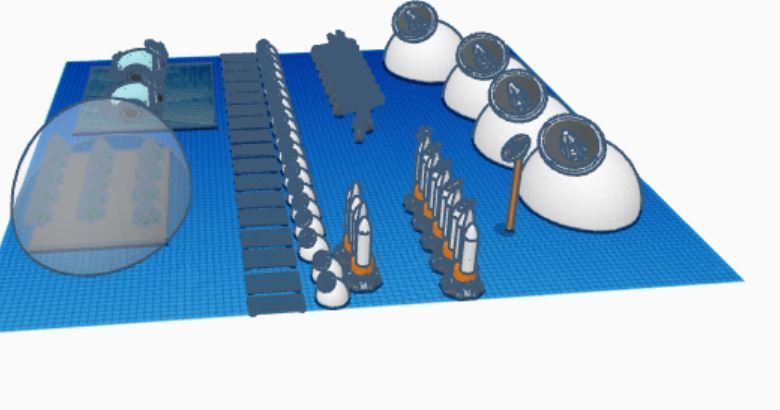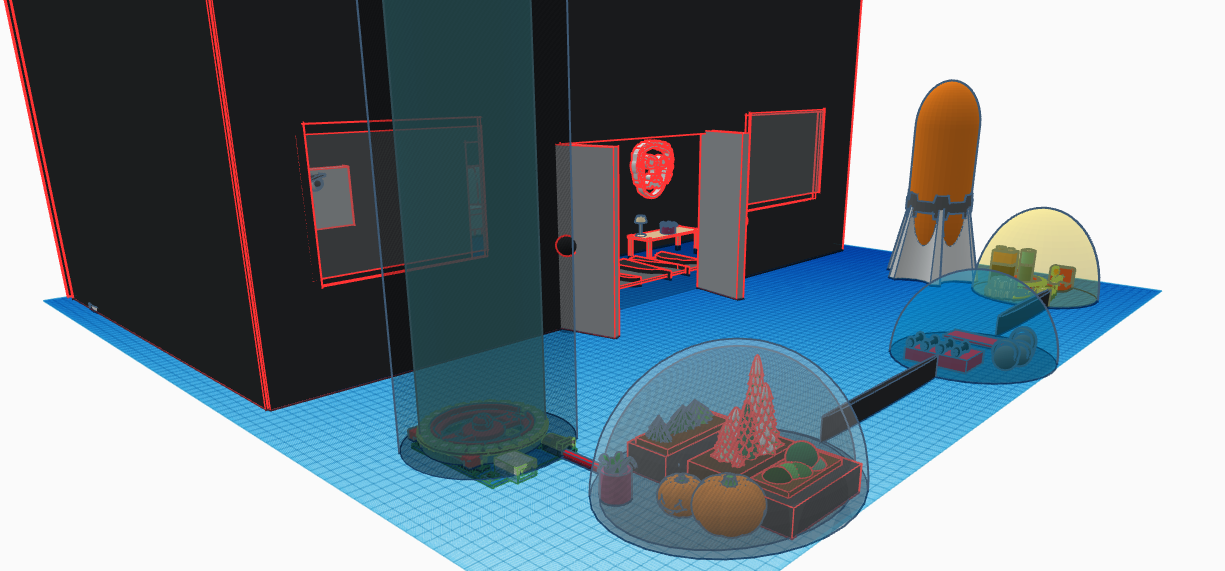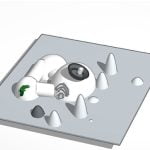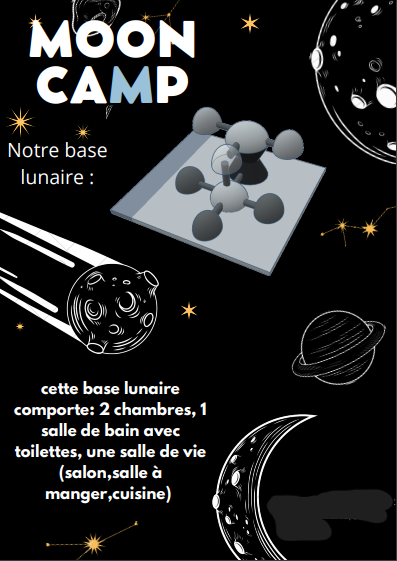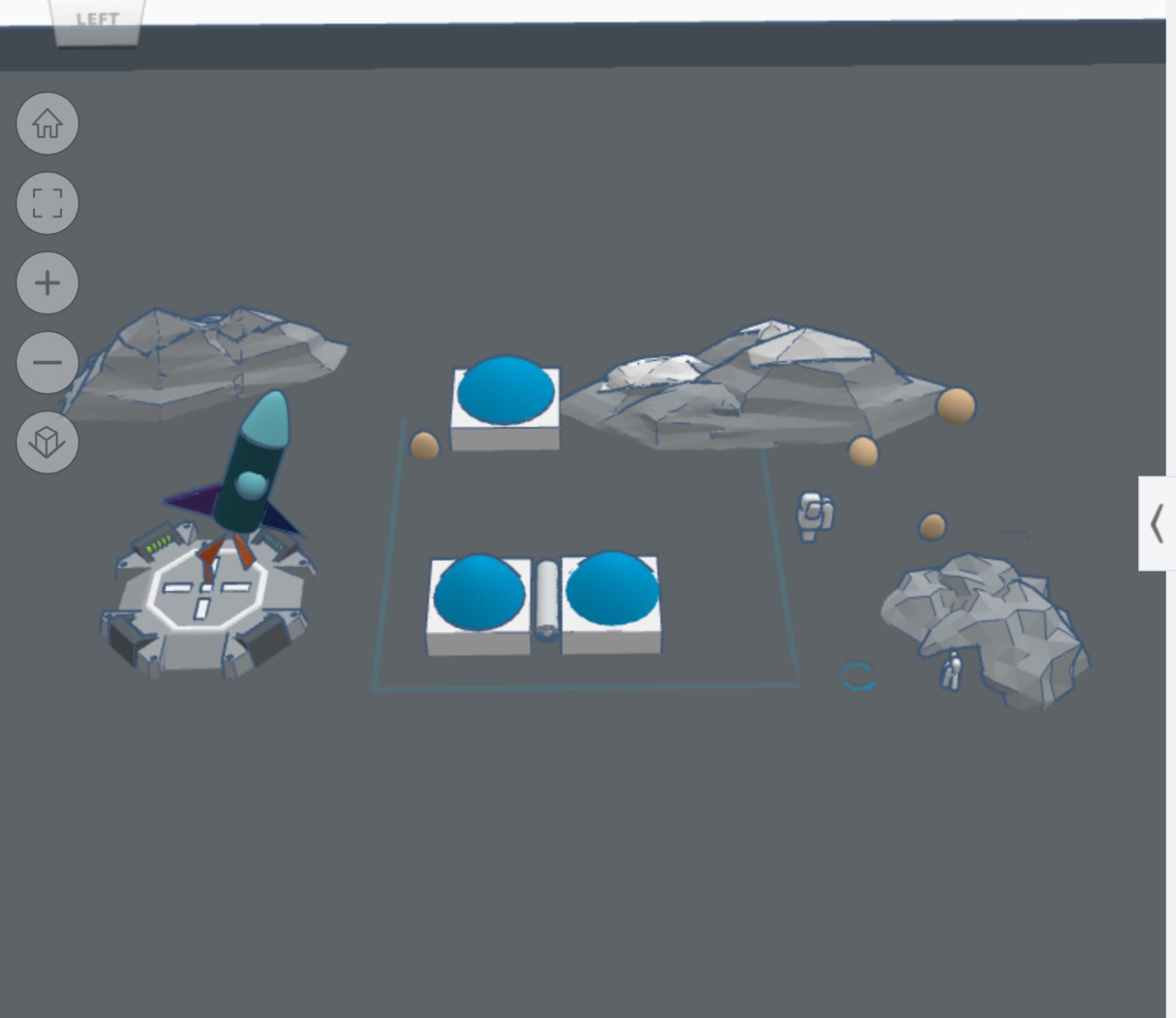Moon Camp Explorers Gallery 2021-2022
In Moon Camp Explorers each team’s mission is to 3D design a complete Moon Camp using Tinkercad. They also have to explain how they will use local resources, protect astronauts from the dangerous of space and describe the living and working facilities.
Team: Moon Aliens
GEMS Modern Academy Dubai United Arab Emirates 9 4 / 0
External link for 3d
|
Project description
Our moon camp consists of several different components like drills, antennas, domes, rockets etc. Each part of the camp has its own job. An astronaut at the camp will be protected from all the elements like radiation, meteorites etc. We are trying to be as protective as possible. |
||||
|
Where do you want to build your Moon Camp?
Northern rim of Peary crater, close to the north pole. Why did you choose this location?
The northern rim of Peary is considered a site for our future Moon base. We have chosen this because of the constant illumination, which would provide both a stable temperature between 30 and 40K and an uninterrupted solar power supply. This area consists of frozen water which will be main source for survival of our Camp. How do you plan to build your Mooncamp? Which materials will you use?
Now, a dozen or more robots will be sent to the moon. These robots will have inbuilt 3d printing capabilities and can move heavy loads. The robots will begin and finish the building of the camp. Other materials such as glass, plastic, concrete etc would be either 3d printed or supplied from earth. Other parts such as Solar panels, antennas small mechanisms moving parts etc are supplied from earth too. All the walls would be 3d printed. Yes, we do have transparent buildings, we have the greenhouse Which will be made of tempered glass. This glass would be provided from earth panel by panel which will then be used to construct the walls of the greenhouse.
Things made on moon itself:
Things taken from earth:
|
||||
|
Water
|
Food
|
Electricity
|
Air
|
Protection
|
|
In the initial stages, we will import water from the earth for one week. After that, the water storage will be operated and used. Water will be mined from the lunar ice, transported heated, and purified, and then stored in the water facility machines. There will be a lot of water transported |
First few weeks we will use space foods that are packaged in retort pouches or employ freeze drying. They are also packaged in sealed containers which fit into trays to keep them in place. After our greenhouse has been established, we will start growing plants with the lunar soil. After we get the DNA of animals from earth, we will start using the DNA to make lab grown meat. And when we have it that is the method which we will use mostly as it can support us for a life – time. |
We will have solar panels around our moon base as the sun is close to the moon you would get a lot of energy to power the moon base. This power will be converted into electricity to power our base. And just in case some parts of the energy get stored in a big battery so if there is no sun for some time, we can use the battery. |
Air and metal will be provided to the astronauts through a process called molten salt electrolysis. The molten salt electrolysis center will be located outside the camp. I am sure we have all wondered if there is a way to produce oxygen on the Moon? Yes, there is, Using Electrolysis to extract oxygen from minerals in the soil on the moon. Reports have suggested that Electrolysis technique can be used to extract oxygen from silica, aluminum, iron, and other minerals found in the soil on the Moon. “In this case, oxygen is produced as a byproduct. How may you ask? All lunar rock and soil do, however, contain approximately 45 % oxygen, combined with metals or nonmetals. This oxygen can be extracted if thermal, electrical, or chemical energy is invested to break the chemical bonds. But that is not all While oxygen is produced through this process, metal alloys are also generated from the regolith. So, through this process we can get oxygen and metal |
The materials that will be used to create our moon camp consists of lunar concrete, which is a mixture of sulfur and aggregate (grains and crushed rock). Titanium will be mixed with lunar soil to be used for construction. The outmost layer will be made of ion absorption materials which will be UV radiation proof. Our camp is going to be located inside the Peary Crater as mentioned before. The walls of the crater will protect the camp from meteorites thus no other method is required for avoiding it. Even though several ideas to protect lunar camps from radiation include keeping the cap under a few layers of lunar soil, our lunar camp’s utmost layer consists of ion absorption materials which will protect the astronauts from radiation. |
|
Describe a day on the Moon for one of your Moon Camp astronauts
When an astronaut wakes up and rises from their rest station, they have similar cleanliness routines. In their kit, they have other hygiene products. Every astronaut may take their choice of products, including cosmetic products and toothpaste. This Includes what NASA calls “rinse less” shampoo. Astronauts have a schedule to eat three meals a day: breakfast, lunch, and dinner. Exercise is essential in space. It is vital to such an extent that astronauts commit hours every day to fitness. Given the circus , they need to exercise around two hours a day to prevent loss of bone and muscle while living in microgravity. We can also use the energy from the exercising astronauts to power simple machines in the camp to reduce energy waste. In space, rather than beds, astronauts sleep in their sleeping bags situated in their personal crew cabin. The sleeping bags are strapped to the walls of the camp to prevent them from floating. An astronaut starts their work tasks for the day, which can involve several distinct assignments. Astronauts spend their time working on experiments that require their information. It includes checking projects that are controlled from the ground. |
||||


